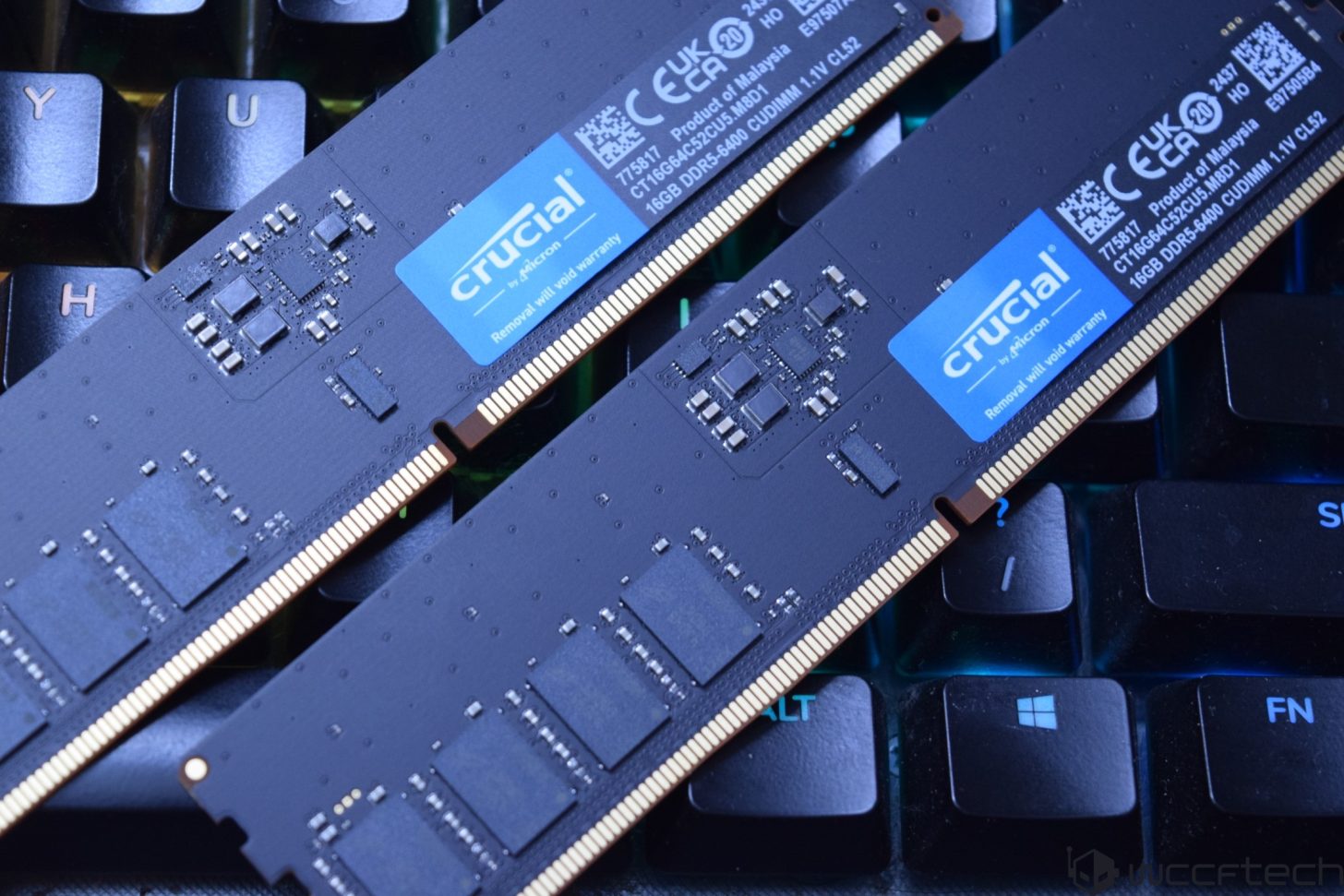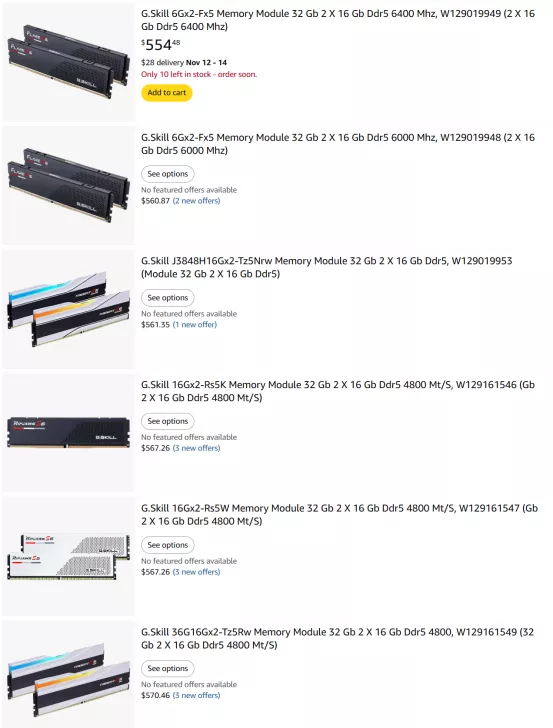DDR5 memory prices have soared to unprecedented levels, with many 16 GB and 32 GB kits now costing double due to supply shortages. The surge in demand driven by AI technology is a significant factor behind these price hikes, impacting both consumer and enterprise markets. The situation began to unfold between August and September, with initial expectations of a 30% increase. However, the reality has been far more severe, with prices skyrocketing by more than 170% for both DDR5 and DDR4 memory products.
Rising Prices and Consumer Impact
DDR5 memory prices have escalated dramatically, with some products witnessing a twofold increase in cost. For instance, a 64 GB DDR5 kit purchased at £255 in May 2023 is now retailing for £495. Similarly, a 32 GB DDR5-7600 kit that was available for $70 a few months ago is now priced around $400. Twitter users and hardware enthusiasts have shared similar experiences, highlighting the significant cost increases.
Price trends from PCPartPicker indicate a similar doubling of prices for various DDR5 memory kits. While DDR4 memory is also affected, DDR5 DRAMs have seen the most dramatic increases. Entry-level kits, such as a 32 GB (16 GB x 2) 4800 MT/s, are now selling for $160-$170, up from under $100 just a few months ago. Higher-end kits like the 6000 MT/s are now priced close to $250.

On Amazon, the cheapest single 32 GB DDR5-5600 modules are over $150. 32 GB kits, consisting of two 16 GB sticks, are priced over $400, and the faster kits exceed $600. Newegg offers better prices, but they are likely to rise as existing stock depletes.
Future Outlook and Market Ramifications
With AI demand continuing to rise, further shortages are expected for DRAM products like DDR5 and DDR4 memory, inevitably driving prices higher. NAND Flash, essential for SSDs, is also predicted to experience price hikes soon. These escalating costs will significantly impact PC builders and gamers planning to upgrade their PCs. The rising prices could dampen PC sales during the holiday season, as consumers may delay or abandon purchasing decisions due to increased costs.
The exact timeline for price normalization remains uncertain, but it will likely take a few months before we observe any stabilization in the DRAM market.


